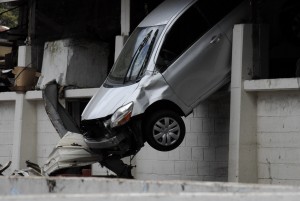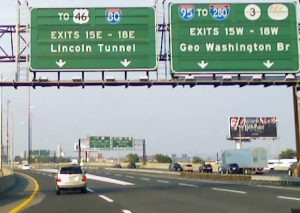Get cheap fast free liability auto insurance quotes online with a low down-payment. Immediately save money by comparing multiple companies that offer the best rates. You can meet your state minimum required limits and still have high-quality coverage. Policies are quickly approved, and needed coverage can be purchased at any time. Full coverage (comprehensive and collision) is available for financed and leased vehicles. Gap coverage is offered for leased vehicles with no initial payment. Preferred and high-risk (SR-22) options are available. You can customize your limits to match your budget and the state minimum requirements.
If you drive, you are required to have bodily injury and property damage liability coverage that meets or exceeds your state's minimum requirements. Unless you properly shop, you could pay much higher rates compared to more affordable options that many companies offer. We research, compare, and review for you, so you pay less, and are able to find the cheapest car insurance prices in your area with the lowest down-payment. Both basic ($12,500/$25,000) and higher amounts ($50,000/$100,000 and $100,000/$300,000) are reviewed. Personal excess liability umbrella options are also discussed for persons that need to protect extra assets. We also review the most recommended coverage for each state.
Our website gives you the opportunity to instantly review offers in your area, and quickly determine the most affordable policies. State-by-state comparisons are regularly updated. Whether you are a young driver purchasing your first vehicle, or you have been licensed for 40 years, we help you quickly find the best options. If your vehicle is obtained with a loan, or has a lien holder, we show you the best deductibles and discounts, including many cost-saving options. Collision deductibles from $100-$5,000 are available while comprehensive deductibles of $0 to $5,000 are offered. Most car policies allow different collision and comprehensive deductibles.
Your Vehicle Liability Requirements
Although there are minor differences in what is legally required in each state, and the amount, typically, the coverage listed below is needed before you operate your car or truck on the road. In most states, before you attempt to drive the vehicle, you must secure valid benefits. Non owner car insurance quotes are also provided on our website.
Depending upon where you live, you may be required to meet specific requirements, even if you do not own the vehicle. Uber, Lyft, UberEats, Postmates, and other ride-sharing companies also must provide certain benefits. Several companies offer policies, including American Family, Farmers, Allstate, Erie, USAA, Progressive, Farmers,Travelers, Esurance, Mercury, Safeco, and Geico.
Bodily Injury
Bodily Injury protects you against the damage you cause to other persons in an at-fault accident. It can consist of actual medical injuries, pain and suffering, and short-term or long-term treatment directly related to the initial claim. It also provides you with legal defense against a party that sues you from injuries. This includes legal and investigative fees. The amount of assets you own should always be considered when choosing your limits. $100,000/$300,000 are standard per/person and per/occurrence limits for leased vehicles. Medical payments coverage is not required.
Non-leased vehicles often have lower amounts, such as $25,000/$50,000 and $50,000/$100,000. Uninsured motorist protection is typically the same amount, although it is not required in all states. Bodily injury coverage is required in all states except Florida and New Hampshire. Florida drivers are required to have PIP (Personal Injury Protection) and property damage. Drivers in New Hampshire must show proof that sufficient equity is available. Underinsured motorist protection is generally widely available.
Additional items that are generally covered, include medical bills from hospitals and related facilities, pain and suffering, unreimbursed income from employers, funeral costs and expenses, short-term and long-term nursing care, and prescribed rehabilitation. Of course, documentation is always required if there is litigation, and records should be kept for at least five years from the date of the incident. A large liability judgment may keep you from receiving a preferred rate until the claim is five years old. Changing carriers may allow you to obtain a lower rate earlier.
Property Damage
Property Damage covers damage and destruction that you cause as a result of an at-fault accident. Hitting or causing contact with another vehicle is one of the most common examples. However, if you were also to hit a house (including its contents), a telephone poll, street lamp, mail box, fence, outdoor furniture, or other stationary objects, it qualifies for coverage. In rare situations, the resulting collateral damage could exceed $100,000. Coverage is required in most states.
If you are at fault, the other driver (or homeowner) submits a claim with your carrier. Property damage and medical expenses are covered, along with potential liability (See above). The policy maximum limit will determine the amount of property damage that is covered. Property damage (PD) does not cover loss of income, lost wages, or reduction in business value. Both personal and commercial property can be considered.
Often, the state minimum required limit for property damage is very low. This amount will vary, depending on the state, and if they have recently increased the required benefit. Many states still only require $10,000 of coverage, although slowly, these amounts are increasing. But since the cost of replacing many new and used vehicles far exceeds $10,000, we urge policyholders to raise limits to either $25,000 or $50,000, if available. Ultimately, for reasons previously stated, $100,000 should also be considered.
NOTE: States with the lowest PD required limits ($10,000 or $5,000) are Arizona, California, Connecticut, Delaware, District of Columbia, Hawaii, Indiana, Kansas, Kentucky, Massachusetts, Michigan, Minnesota, Missouri, Montana, Nevada, New Mexico, New York, Pennsylvania, Vermont, Washington, and Wisconsin.
Uninsured Motorists
Uninsured Motorists (UM) protection is very important since about 15% of all drivers in the US do not have valid coverage. Unless you have this benefit (depending upon the state), reimbursement for thousands of dollars of injuries and damage may not be recoverable. NOTE: In some states, purchasing UM coverage is optional, although the cost is typically fairly low. Underinsured protection is sometimes also required at the same time. Until all US drivers are legally compliant (will likely never occur), UM protection should always be included.
A "hit and run" accident or an incident where the other party flees the scene, are often situations where UM protection can be used. Depending on the type of policy you have, there may be some out-of-pocket expense (your deductible). However, if the money that was spent to pay your claim is fully recovered, your deductible can be returned. Often, it may take months, or possibly years to fully recover all losses. The states with the highest percentage of drivers operating an uncovered vehicle are New Mexico, Oklahoma, Florida, Mississippi, Tennessee, Alabama, and Michigan.
Underinsured Motorists
Underinsured Motorists (UND) is typically not required, but is a benefit that should strongly be considered. When the other party is negligent, but does not have enough coverage to pay for the damages, UND benefits will compensate the owner of the vehicle. However, all court appeals may have to be exhausted and the decision final before funds are dispersed. This could take several years, so don't quit your job!
Persons that select the minimum liability requirements for their vehicles are likely to be underinsured. If you have an accident with persons that carry these coverages, you are most likely to use your UND benefits. Usually, they match the limits of the UM you presently have. However, it is possible to have one benefit, and not the other. Since the cost of adding only UND benefits is not significant, we highly recommend it. If there are no youthful drivers in the household, the resulting increase is not significant. However, for high-risk drivers, the cost will be much higher.
PIP
Personal Injury Protection (PIP) is mostly utilized in "no-fault" states. You can not purchase coverage in any state that is not no-fault. One of the main coverages is the payment of your own medical bills if you are involved in an accident. The amount of money spent on litigation is assumed to be lower, since the claims are paid almost immediately, without a long costly legal battle.
Although filing a lawsuit is not prohibited, there are typically a limited number of situations where it will be financially advantageous to sue. For example, unless a death occurs, or an injury resulting in extensive pain, suffering, and medical bills, litigation may not be recommended. Your own PIP coverage will pay your hospital and doctor expenses along with compensation for missing work. Your private or Marketplace healthcare policy becomes "secondary" instead of "primary" and probably will not be used. Your eligibility for a federal subsidy does not impact your PIP benefits.
State Minimum Limits
Regardless of how low your coverage is, the bodily injury and property damage limits must meet or exceed the minimum requirements in your state. If you don't meet these minimums, you are forbidden to drive, and in some states, own a vehicle if it is likely to be driven. These limits are of course low, and should not necessarily be considered the coverage you should place on your own vehicles. Thus, in all states, the average auto insurance liability is significantly higher than the required minimum.
NOTE: No-fault insurance states ( Florida, Hawaii, Kansas, Kentucky, Massachusetts, Michigan, Minnesota, New Jersey, New York, North Dakota, Pennsylvania, and Utah) may require PIP (Personal Injury Protection) coverage. Required limits are shown below:
Arkansas -- $5,000
Delaware -- $15,000
Florida -- $10,000
Hawaii -- $10,000
Kansas -- $4,500
Kentucky -- $10,000
Maine -- $2,000
Massachusetts -- $8,000
Minnesota -- $40,000
New Hampshire -- $1,000
New Jersey -- $15,000
New York -- $50,000
North Dakota -- $30,000
Oregon -- $15,000
Pennsylvania -- $5,000
Utah -- $3,000
States With Lowest Required Bodily Injury Per Person/Accident Limits:
Arizona -- $15,000/$30,000
Arkansas -- $15,000/$30,000
California -- $15,000/$30,000
Connecticut -- $20,000/$40,000
Delaware -- $15,000/$30,000
Florida -- $10,000 property damage and PIP
Hawaii -- $20,000/$40,000
Iowa -- $20,000/$40,000
Louisiana -- $15,000/$30,000
Massachusetts -- $20,000/$40,000
Michigan -- $20,000/$40,000
Nevada -- $15,000/$30,000
Pennsylvania -- $15,000/$30,000
States With Highest Required Bodily Injury Per Person/Accident Limits:
Alaska -- $50,000/$100,000
Maine -- $50,000/$100,000
Texas -- $30,000/$60,000
North Carolina -- $30,000/$60,000
Texas -- $30,000/$60,000
Which Factors Impact My Rate?
Perhaps the biggest component that determines how much you pay is where you live. Your zip code and/or county of residence can result in differences of hundreds of dollars per year, even with distances of less than 10 miles. For example, Ohio's Cuyahoga County and Pennsylvania's Philadelphia counties often are among the costliest areas in the state. Yet, a person who lives just 15 minutes outside of the county line may pay premiums that are 5%-20% less. Examples are Berks County (Pa) and Medina County (Ohio). Franklin County (Columbus, Ohio) also features low rates.
However, some states simply cost less to provide automobile liability insurance regardless of where you live. For example, Iowa, Wisconsin, Idaho, North Carolina, and South Dakota typically offer very favorable rates for basic coverage, especially if you have less than one moving violation on your driving record. Generally, prices are very competitive in all areas of the state, and not just rural or suburban areas. Although high-performance vehicles will still be fairly expensive, teenager-driving rates in these states also are lower than most other areas. Senior prices ae also generally lower than most other states.
Conversely, New Jersey, New York, Florida, Alaska, Louisiana and Michigan can usually be found on everyone's Top-10 list for highest prices. In these states, because it is more expensive to raise your bodily injury and property damage limits, a higher percentage of residents maintain minimum, but legal coverage. Perhaps they realize that prices are often quite high in all parts of the state. And unfortunately, the percentage of uncovered drivers in these states is typically high, which forces UM (uninsured motorists) prices higher on your policy. If future legislation helps reduce the number of uncovered drivers, rates for everyone will reduce.
What Is An SR-22 Bond?
Firstly, it's important to understand one important fact -- An SR-22 Bond is not an insurance policy. It's actually a document that is issued as a certificate to verify you are covered and you are financially responsible. Reasons that the Bond is required can include getting too many tickets or having too many at-fault accidents, a DUI or DWI, involvement in an accident without coverage, or the reinstatement of a suspended license. NOTE: The "SR" stands for "Safety Responsibility" and prices for coverage will greatly vary from one company to another. However, monthly billing is typically available from all carriers and the cost is reasonable.
Your existing company typically provides the paperwork that will prove that you are meeting the minimum requirement of the state. Your current policy is not impacted. However, you must maintain this extra Bond and until your mandatory period is over. Often, your carrier files an SR-26 with your state, informing them if your existing policy has lapsed. NOTE: Virginia and Florida also require and FR-44 filing if alcohol is involved in the violation or accident.
The following states currently do not require SR-22 filings: Pennsylvania, Oklahoma, North Carolina, New York, New Mexico, Minnesota, Kentucky, and Delaware. However, if changing residences, it's important to verify that your state of prior residence does not require a filing, even though you moved.
No In-Force Coverage?
What happens if your coverage lapsed or you don't have a policy? You will have to pay a "filing fee" for your certificate, and of course, assuming you own a vehicle, need to purchase liability coverage. The minimum state requirements can be selected to help keep premiums low. Although the mandatory time the SR-22 needs to remain in place varies with each state, typically it is about three years. Medical expenses and the vehicle you are driving are not covered by the SR-22. If you don't own or operate a vehicle, and utilize Uber or Lyft (or other ride-sharing services), personal coverage may not be needed.
However, if you are contemplating purchasing your own vehicle, and you have no existing coverage, you'll need ample time to secure coverage that meets or exceeds the state minimum limits. A non-financed vehicle will be cheaper to cover since collision and comprehensive coverage will not be required.
Do I Need A Personal Liability Umbrella Policy?
A personal liability umbrella contract is typically issued by the company that insures your home and automobiles. An additional layer of coverage is provided that is in excess of the benefits you currently have. For example, the minimum underlying required limits are often $100,00 per person, $300,000 per occurrence and $100,000 of property damage for your vehicles, and $300,000 for your home. Thus, if you currently maintain $25,000/$50,000 limits, you will be required to increase your benefits before purchasing an umbrella rider.
An umbrella will also cover several other potential asset-grabbing situations, such as libel, slander, wrongful eviction, false arrest, malicious prosecution, dog bites, and increased liability for rental properties you currently own. The contract is not always issued by the underlying property and casualty carrier.
So back to the question...Do you need this coverage? At a cost of about four or five dollars per day (or less), you'll definitely get peace of mind knowing that your home, vehicles, boats, rental properties, and motorcycles are more than adequately covered. But if you only own your primary residential home and your vehicles, the need for this type of policy certainly diminishes. You can also consider increasing your auto and home liability limits to $500,000 instead of adding the umbrella contract.
If the amount of your total assets exceeds your total liability protection, purchasing an umbrella makes financial sense. If you can avoid putting your liquid assets, retirement savings, and other investments at risk, it's worth four or five dollars each day. Although premiums may gradually increase, because claims are rare, potential price increases are nominal. Additional commercial options are available for business-owners.



